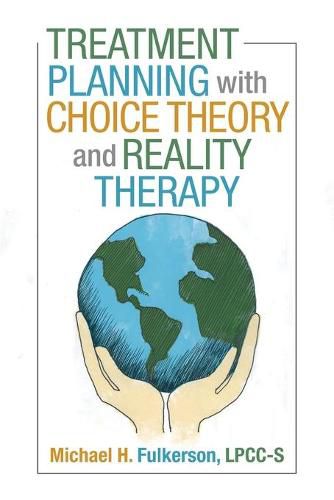Readings Newsletter
Become a Readings Member to make your shopping experience even easier.
Sign in or sign up for free!
You’re not far away from qualifying for FREE standard shipping within Australia
You’ve qualified for FREE standard shipping within Australia
The cart is loading…






This title is printed to order. This book may have been self-published. If so, we cannot guarantee the quality of the content. In the main most books will have gone through the editing process however some may not. We therefore suggest that you be aware of this before ordering this book. If in doubt check either the author or publisher’s details as we are unable to accept any returns unless they are faulty. Please contact us if you have any questions.
Choice Theory/Reality Therapy Treatment Planning describes how to write a theory-driven treatment plan, compatible with person-centered recovery planning principles and satisfy the expectations of insurance companies. Designed to be a primer for mental health practitioners desiring from a choice theory /reality therapy perspective, the author describes how to conceptualize a case study from a choice theory lens and how to implement a treatment plan using reality therapy. Formerly entitled, Treatment Planning from a Reality Therapy Perspective, this third edition includes three new chapters, including one on case conceptualization, integrating choice theory /reality therapy with person-centered recovery planning, and a case study example with a case conceptualization, treatment plan, and a description of the treatment plan implementation. Author Michael H. Fulkerson provides an explanation of how choice theory /reality therapy treatment planning differs from traditional treatment planning models, which are usually bsed on the medical model and/or external control psychology. He offers a synopsis of his experience and research using reality therapy as a treatment modality, presents a review of different treatment models and compares them to reality therapy, provides examples of how to write treatment plans from a public health model rather than a medical model, covers documentation of progress notes, and discusses case studies.
$9.00 standard shipping within Australia
FREE standard shipping within Australia for orders over $100.00
Express & International shipping calculated at checkout
This title is printed to order. This book may have been self-published. If so, we cannot guarantee the quality of the content. In the main most books will have gone through the editing process however some may not. We therefore suggest that you be aware of this before ordering this book. If in doubt check either the author or publisher’s details as we are unable to accept any returns unless they are faulty. Please contact us if you have any questions.
Choice Theory/Reality Therapy Treatment Planning describes how to write a theory-driven treatment plan, compatible with person-centered recovery planning principles and satisfy the expectations of insurance companies. Designed to be a primer for mental health practitioners desiring from a choice theory /reality therapy perspective, the author describes how to conceptualize a case study from a choice theory lens and how to implement a treatment plan using reality therapy. Formerly entitled, Treatment Planning from a Reality Therapy Perspective, this third edition includes three new chapters, including one on case conceptualization, integrating choice theory /reality therapy with person-centered recovery planning, and a case study example with a case conceptualization, treatment plan, and a description of the treatment plan implementation. Author Michael H. Fulkerson provides an explanation of how choice theory /reality therapy treatment planning differs from traditional treatment planning models, which are usually bsed on the medical model and/or external control psychology. He offers a synopsis of his experience and research using reality therapy as a treatment modality, presents a review of different treatment models and compares them to reality therapy, provides examples of how to write treatment plans from a public health model rather than a medical model, covers documentation of progress notes, and discusses case studies.